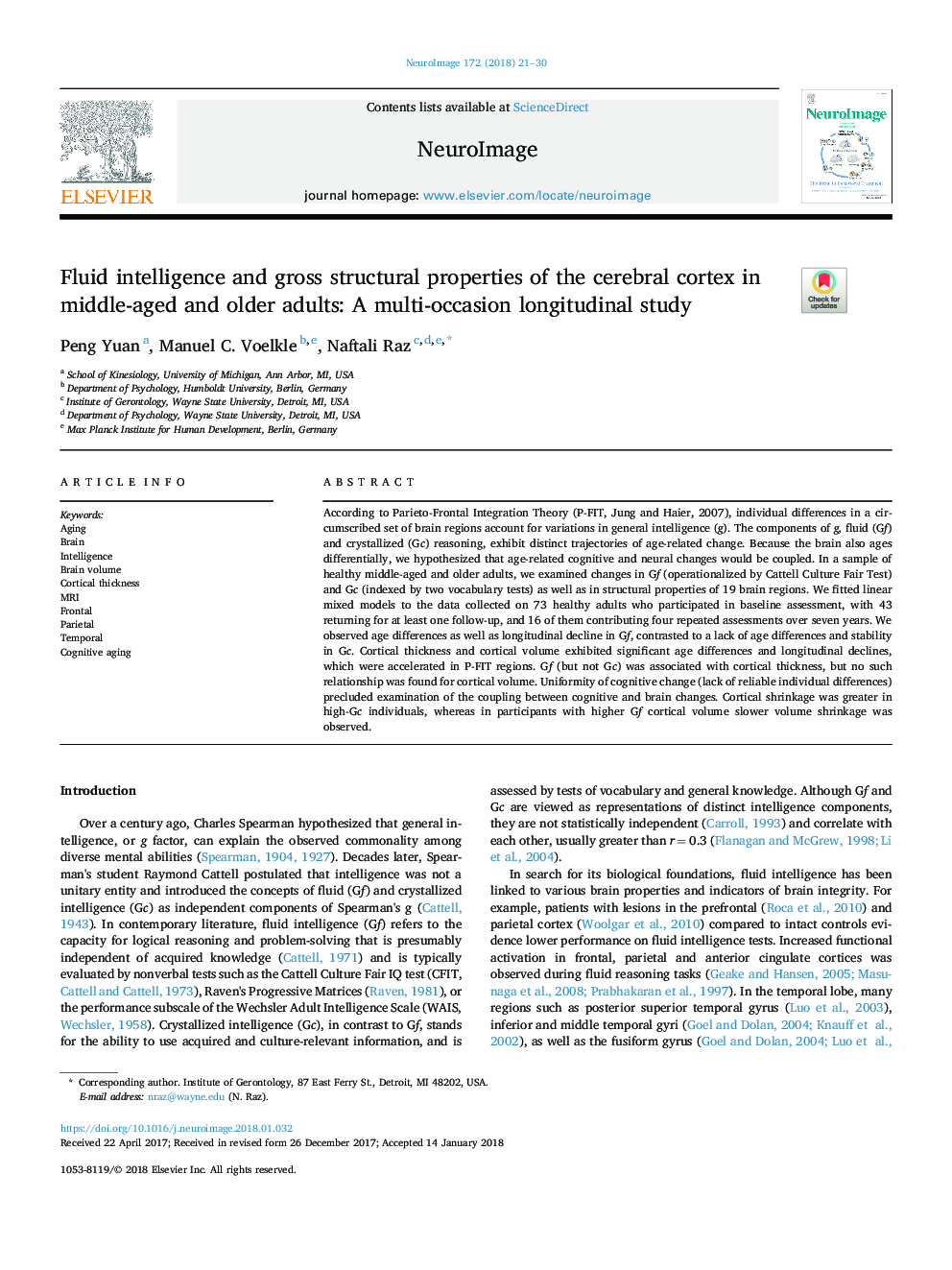| Article ID | Journal | Published Year | Pages | File Type |
|---|---|---|---|---|
| 8687004 | NeuroImage | 2018 | 10 Pages |
Abstract
According to Parieto-Frontal Integration Theory (P-FIT, Jung and Haier, 2007), individual differences in a circumscribed set of brain regions account for variations in general intelligence (g). The components of g, fluid (Gf) and crystallized (Gc) reasoning, exhibit distinct trajectories of age-related change. Because the brain also ages differentially, we hypothesized that age-related cognitive and neural changes would be coupled. In a sample of healthy middle-aged and older adults, we examined changes in Gf (operationalized by Cattell Culture Fair Test) and Gc (indexed by two vocabulary tests) as well as in structural properties of 19 brain regions. We fitted linear mixed models to the data collected on 73 healthy adults who participated in baseline assessment, with 43 returning for at least one follow-up, and 16 of them contributing four repeated assessments over seven years. We observed age differences as well as longitudinal decline in Gf, contrasted to a lack of age differences and stability in Gc. Cortical thickness and cortical volume exhibited significant age differences and longitudinal declines, which were accelerated in P-FIT regions. Gf (but not Gc) was associated with cortical thickness, but no such relationship was found for cortical volume. Uniformity of cognitive change (lack of reliable individual differences) precluded examination of the coupling between cognitive and brain changes. Cortical shrinkage was greater in high-Gc individuals, whereas in participants with higher Gf cortical volume slower volume shrinkage was observed.
Keywords
Related Topics
Life Sciences
Neuroscience
Cognitive Neuroscience
Authors
Peng Yuan, Manuel C. Voelkle, Naftali Raz,
